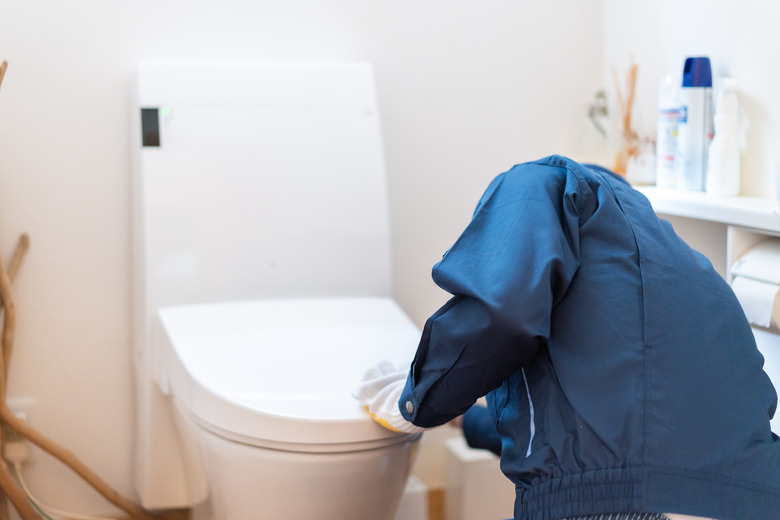How To Fix A Squeaky Toilet
Squeaks can come from the base of your toilet or from the tank, but those that come from the tank are usually more like squeals than actual squeaks. The sounds from the tank are often caused by worn washers, especially if you have an older toilet and you may notice your toilet making a whistling sound or high pitched noise. Squeaks from the base are a sign of instability. More often than not, the toilet is also rocking, and that's actually a reassuring sign. If the toilet isn't rocking, it means the squeaking is coming from the subfloor, and if that's the case, the floor could be wet — you should investigate immediately.
Fix Toilet Squeaking from the Tank
Fix Toilet Squeaking from the Tank
If the toilet squeals after flushing or otherwise making a squealing noise from the tank, remove the lid from the tank, flush the toilet and watch the fill valve as the tank refills. If you have a fill valve with a metal float arm connected to a ball float, you'll probably notice that the mechanism is vibrating where the water comes out, and that's probably where the sound originates. If so, replacing the washer should quiet things down. To do that, you'll need to disassemble the fill valve.
Turn off the water to the toilet by turning the cutoff valve clockwise and flush to empty the tank. Release the float arm by pulling the pins holding it with needle-nose pliers or unscrewing the screws with a screwdriver.
Lift the float arm off the valve, at the same time pulling the attached plunger out of the tube. Replace all the washers you see on the plunger — there may be more than one. Insert the plunger back in the tube and secure the ballcock by replacing the screws or pins. Turn on the water and let the tank fill.
Squeaking from the Base
Squeaking from the Base
First, it's worth noting that if the squeaking is accompanied by sewer smells, the rocking of the toilet has probably broken the wax ring seal. Remove the toilet and replace the wax ring.
Tighten the nuts holding the toilet to the floor, using a box wrench. Pull the plastic cap off of each one — this may require the help of a flat-head screwdriver. If either nut is too corroded to turn, spray it with lubricant to loosen it and try again after five minutes. It may help to hold the top of the bolt with pliers while you turn the nut.
Fix Toilet Using a Shim
Fix Toilet Using a Shim
Avoid over-tightening the toilet nuts. Don't turn them more than a quarter turn past the point at which they feel secure, or you could end up cracking the toilet. Look for space underneath the toilet if you've tightened the nuts as much as it is safe to do. If the flange has been installed too far above the floor level, the toilet will continue to rock and squeak even if the nuts are tight. An easy solution is to shim the toilet.
Tap cedar shims into the spaces underneath the toilet, using a hammer and flat-head screwdriver to wedge them in place. Space the shims around the base in such a way to keep the toilet level. Place a level on the bowl and make sure the bulb is centered after you've placed all the shims.
Cut off the parts of the shims sticking out from under the toilet with a utility knife, then apply a bead of silicone caulk around the base. The caulk will help keep the shims in place and provide extra support.
Check Your Subfloor and Flange
Check Your Subfloor and Flange
Remove the toilet and inspect the subfloor if you hear squeaking even after tightening the nuts or shimming the toilet. The toilet could be leaking, and the subfloor and joists could be rotting.
If you can't tighten the nuts when trying to fix your toilet, turn off the water, disconnect the toilet and remove it because that usually means the flange is corroded or broken. Fix the flange with a repair kit, available at any hardware store, then remount the toilet, using a new wax ring.
